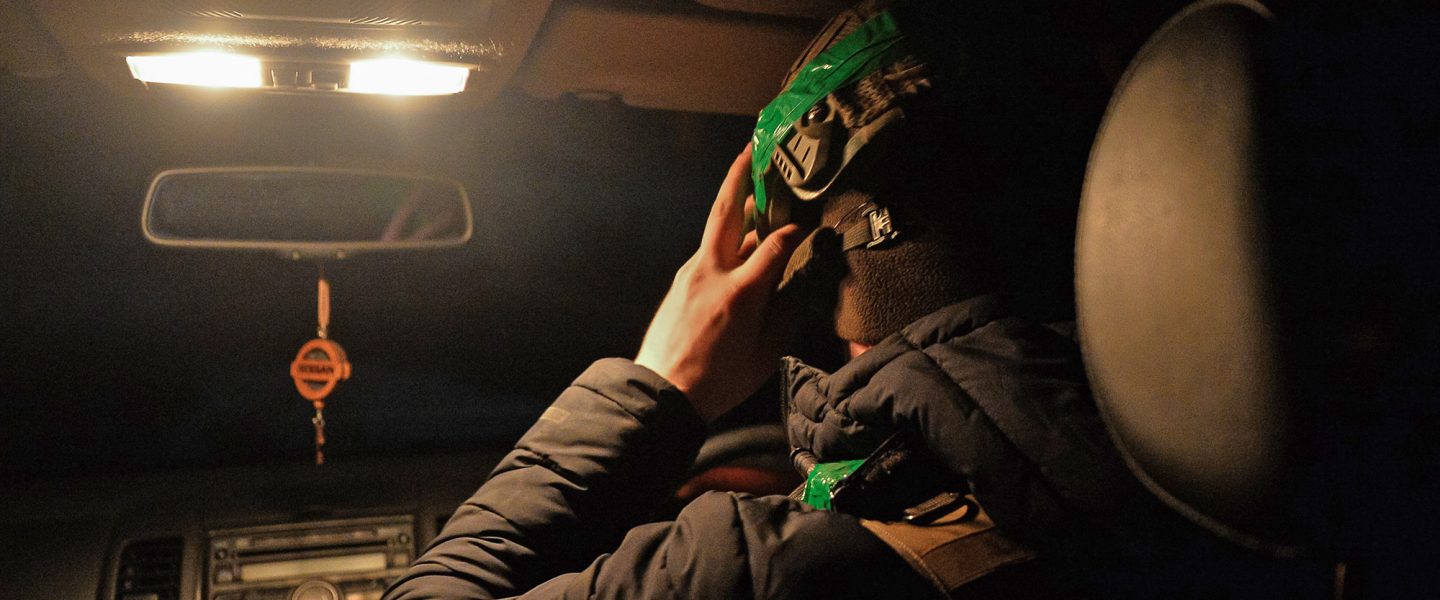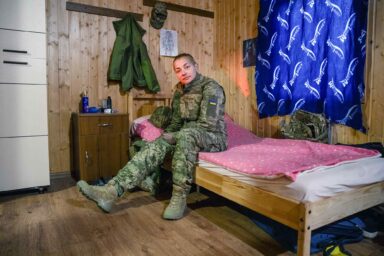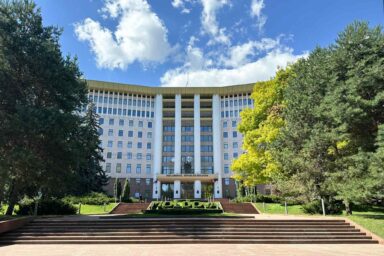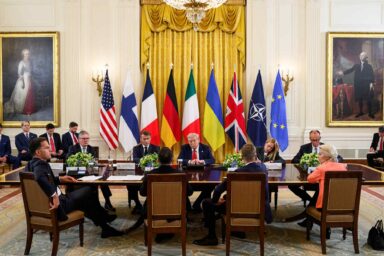With Russian drones running tight daytime surveillance, reaching Ukraine’s eastern frontier battle zones means traveling at night. WhoWhatWhy’s Madeleine Kelly made the trip.
|
Listen To This Story
|
Near Kharkiv in Eastern Ukraine — Andriy, a soldier with Ukraine’s 68th brigade, is driving his truck, rumbling through dark fields scarred by the tracks of previous journeys. It is close to midnight, the darkness only broken here and there by the illumination of the moon. This is the only time it’s safe to travel to zero-line positions. During daylight hours, you are likely to be spotted by multiple Russian surveillance drones and then hit almost immediately by artillery. Andriy relies on night vision goggles to navigate the terrain leading to the front lines.
These days, battlefield drones enable both Ukrainians and Russians to observe the war from the sky and zero in their artillery, all the while minimizing the threat to their own troops. The prevalence of First Person View, or FPV, drones — essentially inexpensive drones that a soldier can carry in his backpack and which, when armed with explosives, are proving extremely deadly — makes it possible for both sides to target each other’s opposing forces precisely. To combat the threat, Ukrainian forces move exclusively at night — that goes for journalists as well as combat soldiers.
As we approach the front, Andriy straps on his helmet, turns off the truck’s headlights, and flicks on his night vision. From now on, no light can show. That also goes for our cameras, which have been covered to prevent any illumination. Moving slowly across a field, we arrive at the drop point, tucked under some trees. We will have to walk the remaining 3 miles to the front on foot.
Piling out of the truck, Andriy takes off his night vision goggles. That gives me a moment to remark on it.
“Yes, night vision!” he says, removing his helmet and handing it to me. I look through the lens. Everything is suddenly illuminated in a bright green hue.
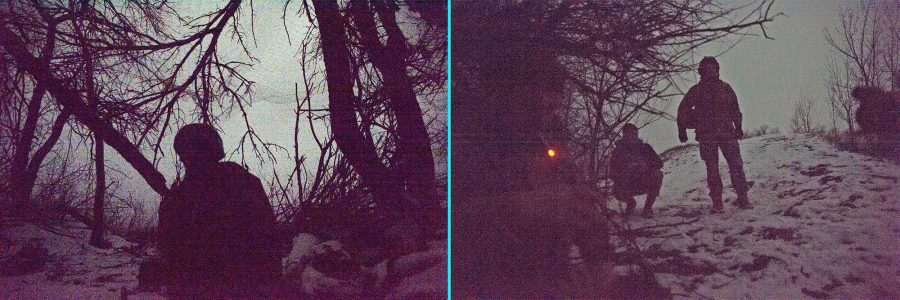
It’s time for us to begin walking. We keep a distance of at least 15 feet from the person in front and in back. This is to avoid presenting a concentrated target in case we come under fire.
Rolling fields covered in snow and illuminated by the moon span in all directions. Tonight, the front is quiet and seems empty. The silence is only interrupted by the crunching of snow and the click of a camera shutter in a futile attempt to capture an image in which nothing is happening.
“Don’t go into that trench,” a soldier says, pointing to a deep culvert off to the left. It’s probably mined, but he doesn’t give us any details.
Halfway to our destination, tucked into a small ravine, we stop under a group of trees. One of the soldiers lights a cigarette.
The vast fields are flanked with tree lines. To the right, we can see what’s left of positions abandoned by the Russians. The Ukrainian army recaptured this territory during the Kharkiv counter-offensive. They were certainly mined by the retreating Russians. Step by step, we cautiously follow a soldier leading the way. We go over some hills until we finally enter a trench concealed by more trees.
Above us, a small mesh net has been strung up to some trees. It’s there to keep the drones from hitting the soldiers. Here and there, tree trunks and branches have been snapped off by artillery. Safe behind the trees, the soldiers discuss the situation.
“I have bad English,” one laughs, as we try out our limited vocabularies in each others’ languages. The word for a girl cat, “kishka,” gets the most laughs.
“The Russians are over there,” Andriy says, pointing across the field in front of us. “Not many attacks.” These are an uncommon occurrence along the front these days. It’s now nearly pitch black. I recognize Andriy by the outline of his helmet and night vision equipment. The darkness obscures his features.
As we make our way through the tight trench, our body armor leaves muddy scratches along the walls.
“The drones are the biggest danger,” Oleg, a soldier we meet in the trench, says. The Russians have substituted the drones for infantry attacks. The older soldier rests in a small foxhole that has been dug into the trench line. Oleg rotates through the lines every two to three days. He does not get much rest while at the front.
“I haven’t seen my family in nine months,” Oleg says. He is tired of fighting, but determined to continue.
As we exit his hidden cave, we suggest that he get some sleep. “Oh, I won’t sleep,” he chuckles.
The sound of gunfire splits the night. As quickly as we arrived, we’re told we must leave. Once again, we divide into groups and keep a safe distance between us. This time, however, the pace has quickened. We can see the orange glow of tracer rounds over the horizon. They’re firing over the hills beyond the fields in front of us. The situation has suddenly changed, and our trip is cut off at the knees. If we don’t leave now, we might not have another chance to.
Crossing once again through the paths in the snow, the group weaves through the fields and rolling hills. The occasional crack of gunfire interrupts the crunching snow beneath our boots until we finally arrive back at the truck that’s still concealed in the trees. Again, we rumble through the fields and snow, obscured from view by the night.
